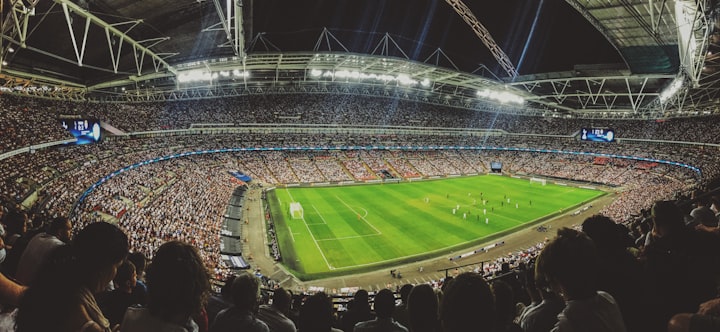The Market of Football/Soccer
Marketing strategies

KPMG's Football Benchmark is a player evaluation tool that provides an estimate of the market value of professional footballers based on a proprietary algorithm. This is a market valuation that does not take performance-related bonuses into account as part of a potential player transfer fee. For players who have not played in any of the above professional leagues in the last two seasons (2019-20 and 2020-21) or players who have had less than 450 minutes of game time in the two seasons combined, there is no estimate of market value.
The truth is that globalization and the absence of online boundaries between football clubs have stopped local communities from being represented. The outbreak of COVID-19 has led to a huge drop in demand for football among individuals and several sports clubs around the world. The football market is an unrefined material and the retail industry is in poor shape due to the Covid 19 episode in the Football Business Survey.
Football clubs seem to be a representation of ideas and values with which everyone can identify. The internet and social media have opened up new avenues of communication between clubs, fans, and sponsors in the football business. How you interact with the game is key to the personalized content that the company can generate.
On October 13, 2016, the Johan Cruyff Institute hosted an Association of GlobalSportsJobs webinar on the impact of the digital age on football marketing. This report provides a quantitative analysis of current trends in the global football market and an assessment of market dynamics for 2021-2027, as well as an identification of prevailing opportunities. The Global Football Market Report presents a comprehensive analysis of the market competitive landscape, including a full corporate profile of key players in the market.
Key players in the industry rely on strategies such as product launches and innovation to remain relevant in the global football market. Football is one of the most important sports in the world and the marketing of the sport has become an important issue as clubs and product owners need to generate more revenue from the sport. Leading market participants in the Global Football Market Report analyzed include Baden Sports, Decathlon Sports Pvt.
The growing popularity of sport and fitness, the increasing adoption of extracurricular activities, and the increasing influence of sports celebrities among young people on social media have driven the growth of the global football market. The dominance of North America and Europe can be traced back to the beginning of national and international football events, which have increased the popularity of the sport in these regions. The growing interest in football, fuelled by leagues at the club and country level, has driven the growth of the global football market.
The growth of football events on a global and national level has affected player participation. Prominent sportsmen advertise sporting events and football products. Clubs and sponsors are funding digital initiatives to get extra attention, but brands need to be careful not to scare fans.
Clubs should also look at the South American football powerhouses. There are many potential willing fans on the continent and there is no way to sway people into following a league, buying club kits, or consuming football concepts and culture. An excellent example of the untapped Latin American market comes from Brazil, a country often associated with the term "football".
Motivated by plans to build an $813 billion sports industry by 2025, large Asian companies are beginning to invest in global football, which seems like a logical next step in brand development for some of the world's biggest clubs. Launched in October 2015, the Football Index allows its users to buy so-called shares in professional footballers, earning dividends of 1p to 14p a share over three years, according to a structure based on the performance of the players on the pitch. From its appearance, terminology, and marketing, Football Index mimics an investment platform that sells real shares in a real business.
Several drivers were identified, each with its own specific weight, as the key to estimating the market value of footballers. Most valuable footballer in April 2021: estimated market value in millions of euros (chart). According to a report by Allied Market Research the global soccer market was estimated in 2019 at $18.8 billion and is expected to reach $37.1 billion in 2027, an 18.3% CAGR between 2021 and 2027. The report provides an in-depth analysis of the top investments, the areas with the best profit strategies, drivers and opportunities, the market size estimates, competitive scenarios, and fluctuating market trends.
The global football market is segmented by product type, manufacturing process, distribution channel, and region. The football market differs geographically in North America, Europe, Asia-Pacific, South America, the Middle East, and Africa. Based on the distribution channels, the market is divided into specialist shops, supermarkets, supermarkets, online shops, and other distribution channels.
Leading sports data companies such as Hudl and Wyscout provide sports performance data, while KPMG Football Benchmark, a player evaluation tool provided by our sports consultancy, has the relevant sports data needed to calculate player market value estimates. Defines and describes the forecast of the football product market by type, application, end-user, and region. Since this is the preferred type of league match, the Match Football segment is anticipated to be the fastest-growing segment during the forecast period.
Important market trends include the introduction of butyl bubbles (silicone valves and latex bubbles) and several butyl bubble footballs, which are entering the premium football market due to the effectiveness of the material.
In the competitive landscape, the major players on the market, Adidas and Nike, are renewing their footballs with abstract patterns and experimenting with a range of plates to give the ball more stability.





Comments
There are no comments for this story
Be the first to respond and start the conversation.